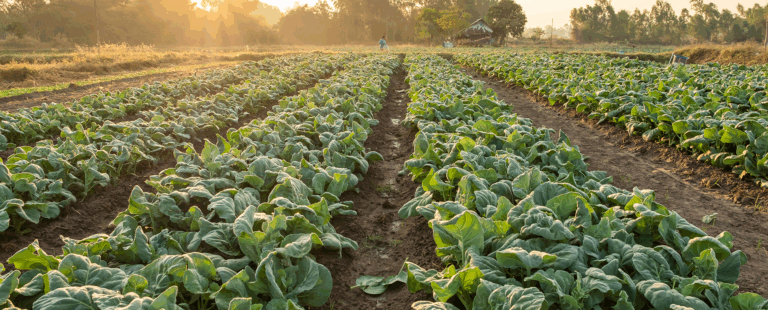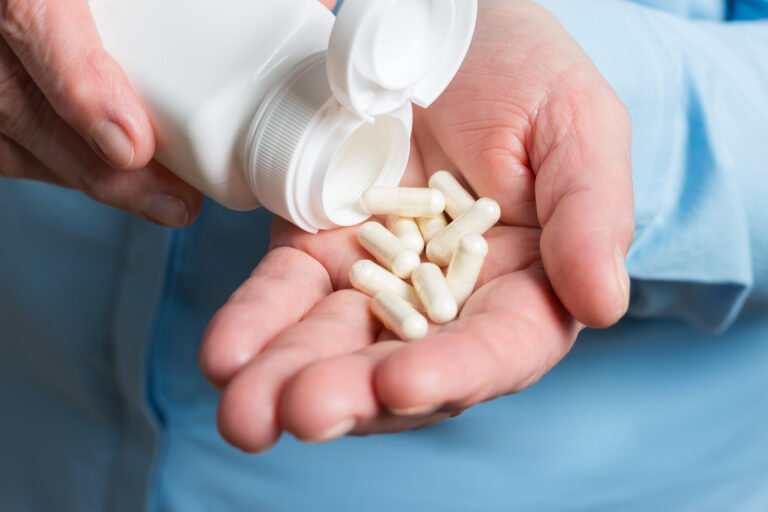Antioxidants and Oxidative Stress
Antioxidants and Oxidative Stress
As their name implies, antioxidants are a class of molecules with the ability to prevent oxidation. Their action is biologically important for the prevention of cellular damage that can lead to dysfunction, disease, and early aging. The human body can synthesize antioxidants endogenously, but the diet also plays a vital role by supplying vitamins, minerals, and plant compounds that have antioxidant activity.
What Is Oxidation?
Oxidation is a chemical process resulting in the loss of electrons from an element or molecule. In nature, oxidation is responsible for the rusting of metal, the browning of cut fruit, and even the green patina of the Statue of Liberty. Physiologically, oxidation results in the formation of reactive oxygen species (ROS) and reactive nitrogen species (RNS), some of which are free radicals – elements or molecules with an unpaired electron. In order to stabilize themselves, free radicals seek to pair with another electron which they readily steal from a vulnerable neighbor. While some level of ROS and RNS is important for cell signaling purposes, an uncontrolled level can result in a chain reaction that impairs cell membrane structure, reconfigures proteins, and damages DNA.
Free radicals are formed in a few different ways:
- Energy metabolism (oxidative phosphorylation)
- Immune responses
- Chemical and drug metabolism
- Enzymatic reactions that rely on iron or copper
- Radiation (i.e. UV and x-ray)
What Is Oxidative Stress?
Under normal conditions, there is homeostatic control of the balance between the formation of free radicals and their elimination. Oxidative stress occurs when oxidation exceeds the capacity of antioxidants – a class of molecules that have the ability to stabilize free radicals. Antioxidants act by donating electrons to free radicals without becoming reactive themselves, saving the vulnerable neighbor from electron theft and stopping what could become a chain reaction of oxidation. Oxidative stress has been implicated in the origin and progression of diseases and accelerated aging.
What Do Antioxidants Do?
The antioxidant capacity of the human body relies on the synergistic interactions of multiple endogenous compounds, nutrients, and phytochemicals. These endogenous and exogenous antioxidants work together to make up an antioxidant system of defense, where each compound relies on the other for recycling their antioxidant potential.
Endogenous antioxidants
The production of endogenous antioxidants is activated by a genetic regulation network initiated by nuclear factor erythroid 2-related factor 2 (Nrf2). Under normal conditions, the endogenous antioxidants are present in sufficient levels to keep oxidative stress in check. But when oxidative stress levels suddenly increase, Nrf2 activates to increase the production of antioxidant molecules and enzymes to restore homeostasis. These molecules and enzymes include superoxide dismutase, catalase, glutathione peroxidase, and others.
Glutathione
Glutathione is often called the body’s “master antioxidant.” It is a tripeptide synthesized from the amino acids glutamine, cysteine, and glycine. In its reduced form (GSH), glutathione can donate an electron to a free radical and remain stable. Several chronic diseases have been associated with low glutathione levels, which may be decreased due to genetic variation or the disease state itself.1
Glutathione can be found in several food sources, and while it would seem prudent to consume them for this benefit, there is conflicting evidence as to whether the consumption of glutathione itself actually increases endogenous levels. Certain foods and nutrients, however, have been shown to raise glutathione levels when consumed: whey protein, cruciferous vegetables, and polyphenols have all been shown to increase glutathione levels.
CoQ10
Coenzyme Q is ubiquitous in all cells and life forms and is therefore also known as ubiquinone. CoQ10 is the form primarily synthesized in humans, and it is the only fat-soluble, endogenously-produced antioxidant. CoQ10 is being studied for its broad role in cellular processes, but it has been most widely studied for its role in the electron transport chain and antioxidant protection of cell membranes.2
Nutrient antioxidants
Vitamin C
Vitamin C is a water-soluble vitamin found in fruits and vegetables. It acts as a coenzyme for several enzymatic reactions, and it can readily donate an electron to quench free radicals. It is concentrated in white blood cells, eyes, adrenal glands, pituitary glands, and the brain. Once oxidized, it can be recycled by various phytonutrients and by glutathione. The recommended dietary allowance (RDA) for vitamin C was originally based on the amount necessary to prevent scurvy, but more recent increases in recommended intake are based on the antioxidant activity of vitamin C and its role in preventing oxidative destruction of white blood cells, possibly related to its involvement with regenerating vitamin E.
Vitamin E
Vitamin E is a fat-soluble vitamin and the primary fat-soluble antioxidant. It is incorporated into cellular and organelle membranes where it protects lipids from oxidation. Once oxidized itself, it can be recycled through interactions with vitamin C and CoQ10. Vitamin E includes a group of eight, chemically related substances (4 tocopherols and 4 tocotrienols) found in nuts, seeds, vegetable oils, and in smaller amounts in leafy greens. Alpha-tocopherol is the form of vitamin E present in highest concentrations in human tissues, so it has become synonymous with the term vitamin E. There are conflicting studies on the benefits of alpha-tocopherol supplementation, but vitamin E in its whole food form ensures the synergistic effects of the tocotrienols and other nutrients which have been associated with multiple benefits associated with antioxidant activity.3
Selenium
Selenium is a mineral found in the soil and an important part of the body’s antioxidant network. It works synergistically with vitamin E and is closely associated with the sulfur-containing amino acids, cystine and methionine. It is a component of enzymes important for the production of thyroid hormone and the antioxidant enzyme glutathione peroxidase, which provides the thyroid and other tissues with antioxidant protection.4 Dietary sources of selenium include brazil nuts, organ meat, and seafood, with other nuts, meats, cereals, grains, and dairy products also contributing.
Zinc
Zinc acts as an antioxidant through a few different mechanisms. It can compete with reactive metals (iron and copper), protect sulfur-containing proteins, and help activate endogenous antioxidants. A small double-blind placebo-controlled study in 2010 found that zinc supplementation could increase plasma antioxidant power and decrease oxidative stress markers in elderly subjects taking 45 mg over the course of 6 months. hsCRP, plasma IL-6, and other markers of inflammation were also improved.5 Zinc is found in shellfish, beef, whole grains, beans, and nuts.
Phytonutrient antioxidants
Phytonutrients are plant chemicals that provide protection to the plants that synthesize them but also confer benefits to humans when they are consumed. They have numerous physiological actions including upregulating endogenous defenses, influencing epigenetic expression, and supporting a healthy microbiome. The largest class of phytonutrients are the polyphenols, which exert their antioxidant activity by scavenging free radicals, chelating reactive metals, and upregulating Nrf2.
Polyphenols include a large class of phytonutrients including flavonoids, phenolic acids, stilbenes, and lignans. The flavonoids are some of the most studied and include substances found in a wide variety of plant foods.
Rutin is a flavonoid found in high amounts in buckwheat. Its capacity to scavenge free radicals and upregulate Nrf2 is the proposed mechanism for observations that show protective effects against multiple chronic and degenerative conditions including cataracts, cardiovascular disease, kidney health, respiratory distress, and certain cancers.6
Rutin is converted to the flavonoid quercetin when it enters the bloodstream, and together they have been shown to inhibit production of radicals in inflammatory conditions such as rheumatoid arthritis and protect against damage from radiation. A 2013 study showed a combination of orally administered rutin and quercetin to increase endogenous antioxidants and ameliorate damage from gamma-radiation in pretreated mice.7 Besides buckwheat, rutin and quercetin are found in apples, berries, green tea, red wine, onions, and a variety of herbs.
Another well-studied group of flavonoids are the anthocyanidins and their counterparts the anthocyanins. Anthocyanidins are a class of phytonutrients found in blue, red, and purple foods such as berries, grapes, and purple cabbage. Their antioxidant activity is one of the ways they exert their influence on eye health, neuroprotection, cardiovascular disease, diabetes, cancer, inflammatory conditions, and obesity.8 The chemical structure of this class of phytonutrients allows them to act as antioxidants directly, by quenching free radicals and reducing overall oxidative stress.
Glucosinolates, a class of sulfur-containing phytonutrients, have been associated with many health benefits related to digestion, detoxification, healthy immunity, and cancer prevention. Their antioxidant effects are based on their ability to increase endogenous defenses and tamp down oxidative stress. Several in vitro and in vivo studies have reported the neuroprotective effects of glucosinolates and associated these effects with their activation of Nrf2.9 Cruciferous vegetables are the highest sources of glucosinolates, with Spanish black radish and Brussels sprouts being among the highest.
The carotenoids represent another important class of phytonutrients with antioxidant activity. The carotenes and the xanthophylls all contribute to antioxidant defenses in the body.
Carotenes:
- Alpha-carotene
- Beta-carotene
- Lycopene
Xanthophylls:
- Beta-cryptoxanthin
- Lutein
- Zeaxanthin
- Astaxanthin
- Canthaxanthin
Several epidemiological studies have shown the carotenoids to be protective against chronic diseases such as type 2 diabetes, other cardiometabolic diseases, and some cancers. Lutein and zeaxanthin are associated with maintaining eye health and are theorized to be a conditionally essential nutrient in the elderly.10 The antioxidant actions of carotenoids are due to both their direct quenching of free radicals and their indirect activation of Nrf2. Beta-carotene is found in carrots, sweet potatoes, spinach, turnip greens, Brussels sprouts, other green leafy vegetables, and red and orange fruits and vegetables. Lutein and zeaxanthin are high in Swiss chard, turnip greens, kale, and other leafy greens.
The relationship between endogenous and exogenous antioxidants is complex, and the science continues to emerge. Hundreds of phytonutrients have been identified, but the total picture of their synergistic effects continues to be explored. It seems clear, however, that the human body is continuously monitoring its oxidative status and reacting to increases in oxidative stress. The process of maintaining homeostasis relies on an immediate response to destructive radicals by maintaining levels of antioxidant molecules and enzymes, and the ability to activate transcription factors for increasing those levels when necessary. Providing nutrients and phytonutrients for supporting this activity is paramount and has in fact been associated with decreased incidence of chronic and degenerative disease.
- Minich DM, Brown BI. A Review of Dietary (Phyto)Nutrients for Glutathione Support. Nutrients. 2019;11(9):2073. Published 2019 Sep 3. doi:10.3390/nu11092073
- Stefely JA, Pagliarini DJ. Biochemistry of Mitochondrial Coenzyme Q Biosynthesis. Trends Biochem Sci. 2017;42(10):824-843. doi:10.1016/j.tibs.2017.06.008
- Wong SK, Kamisah Y, Mohamed N, et al. Potential Role of Tocotrienols on Non-Communicable Diseases: A Review of Current Evidence. Nutrients. 2020;12(1):259. Published 2020 Jan 19. doi:10.3390/nu12010259
- Ventura M, Melo M, Carrilho F. Selenium and Thyroid Disease: From Pathophysiology to Treatment. Int J Endocrinol. 2017;2017:1297658. doi:10.1155/2017/1297658
- Bao B, Prasad AS, Beck FW, et al. Zinc decreases C-reactive protein, lipid peroxidation, and inflammatory cytokines in elderly subjects: a potential implication of zinc as an atheroprotective agent. Am J Clin Nutr. 2010;91(6):1634-1641. doi:10.3945/ajcn.2009.28836
- Ganeshpurkar A, Saluja AK. The Pharmacological Potential of Rutin. Saudi Pharm J. 2017;25(2):149-164. doi:10.1016/j.jsps.2016.04.025
- Patil SL, Mallaiah SH, Patil RK. Antioxidative and radioprotective potential of rutin and quercetin in Swiss albino mice exposed to gamma radiation. J Med Phys. 2013;38(2):87-92. doi:10.4103/0971-6203.111321
- Khoo HE, Azlan A, Tang ST, Lim SM. Anthocyanidins and anthocyanins: colored pigments as food, pharmaceutical ingredients, and the potential health benefits. Food Nutr Res. 2017;61(1):1361779. Published 2017 Aug 13. doi:10.1080/16546628.2017.1361779
- Jaafaru MS, Abd Karim NA, Enas ME, Rollin P, Mazzon E, Abdull Razis AF. Protective Effect of Glucosinolates Hydrolytic Products in Neurodegenerative Diseases (NDDs). Nutrients. 2018;10(5):580. Published 2018 May 8. doi:10.3390/nu10050580
- Bohn T. Carotenoids, Chronic Disease Prevention and Dietary Recommendations. Int J Vitam Nutr Res. 2017;87(3-4):121-130. doi:10.1024/0300-9831/a000525







